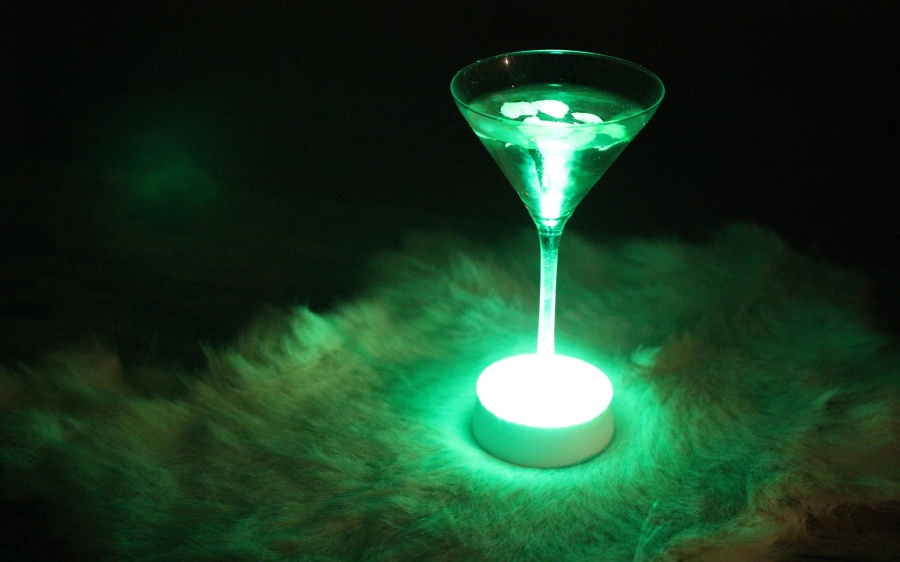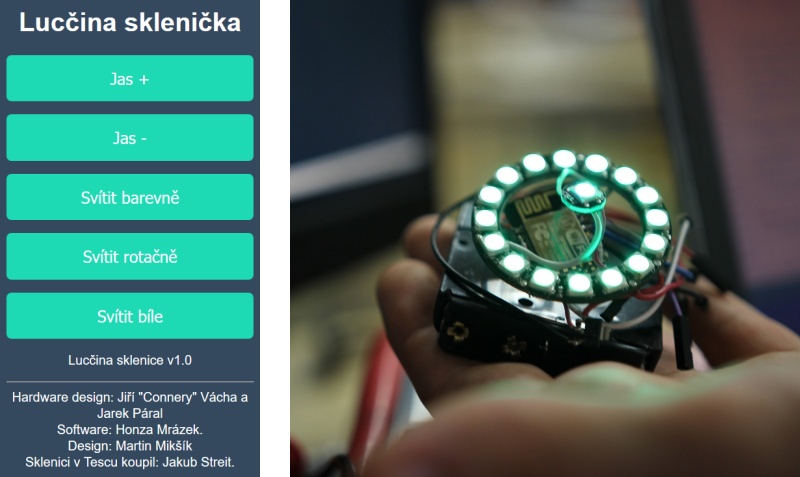A WiFi controlled, colorful martini glass. Simple project developed during RoboCamp 2016 as a test project of programming ESP8266 in Arduino environment.
ESP8266 in ESP-12 module is used as a main MCU. 12 + 1 WS2812B LEDs are connected to GPIO0 and are arranged in a ring of 12 LEDS and a single center LED. A 3D-printed pedestal for the hardware can be found in the hw directory. Everything is powered from 4 AAA batteries. The batteries voltage is fed directly to the LEDs, ESP8266 is powered through 3V3 linear stabilizer.
Note for future us: We didn't use a level shifter at the LED data input. For 5 V power supply, this is OK, however when the batteries are fully charged and the supply voltage exceeds 5.3 V, the LEDs stop accepting data and level shifter is needed. In the last version, simple hack with a diode on battery input was used because of time reasons. Fix it in the next version!
Software is written in Arduino environment and supports OTA firmware update. The first firmware flash however has to be done using serial line. See this document to boot ESP-12 into firmware update mode.
Glass creates its own AP. When you connect to it, simply open a web browser and go to "sklenicka.cz" (or any other page). The built-in DNS server should point you to the control page. If it doesn't, your device has probably cached DNS entries from previous connection. In that case, wait a while or go to "192.168.1.1".
Control throug web page should be intuitive and clear. There is also a possibility to open a socket (telnet) connection to the glass at port 12346. Simple single character commands are provided. Note that some software (telnet for example) are line buffered, so you have to acknowledge every command with newline.
- Hardware design: Jiří "Connery" Vácha and Jarek Páral
- Software: Jan Mrázek
- Web page design: Martin Mikšík
- The glass was bought in Tesco by: Jakub Streit

